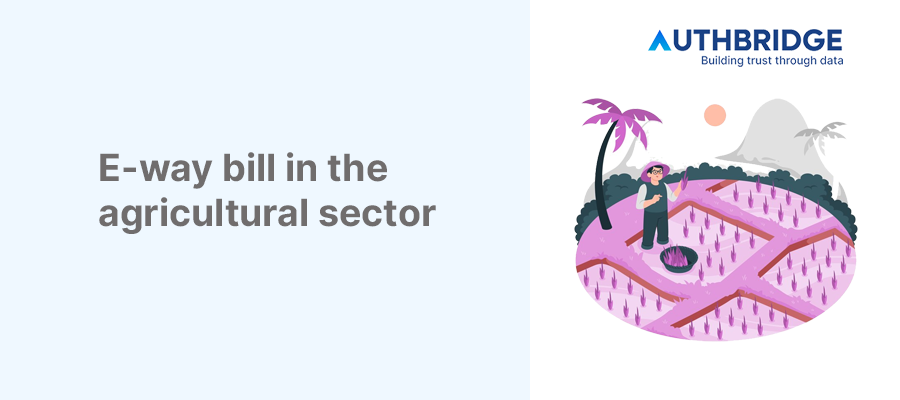Understanding E-Way Bill Compliance In The Agricultural Sector: Enhancing Supply Chain Transparency And Efficiency

Overview and Importance
The E-Way Bill system, a critical component of the Goods and Services Tax (GST) framework, mandates the generation of an electronic waybill for the movement of goods exceeding a specified value threshold. In the agricultural sector, this system plays a pivotal role in ensuring the seamless transportation of agricultural produce across state lines, enhancing the traceability and accountability of such movements. It aims to curb tax evasion and ensure that the supply chain of agricultural goods is transparent and efficient.
Legal Framework and Applicability
The legal requirements for E-Way Bills in agriculture are dictated by the GST council, which outlines the conditions under which an E-Way Bill must be generated. These conditions include the type of goods being transported, the distance of transportation, and the value of the goods. For the agricultural sector, certain exemptions are provided to ease the burden on smallholder farmers and facilitate the free flow of agricultural commodities. For instance, the transport of fresh produce, in many cases, is exempt from the E-Way Bill requirement, recognizing the perishable nature of these goods and the necessity for swift transportation.
Table 1: E-Way Bill Applicability in Agriculture
Commodity Type | E-Way Bill Requirement | Exemptions |
Fresh Produce | No (subject to conditions) | Most fresh produce is exempt |
Processed Foods | Yes (if above the threshold value) | Specific exemptions based on product and distance |
Agricultural Inputs | Yes (if above the threshold value) | Certain inputs like seeds, fertilizers may have exemptions |
Impact of E-Way Bills on the Agricultural Sector
Enhancing Supply Chain Transparency
The introduction of E-Way Bills has significantly improved the transparency of the agricultural supply chain. By requiring detailed documentation for the transport of goods, stakeholders, including farmers, traders, and logistics providers, can now track the movement of agricultural produce in real-time. This transparency aids in reducing losses, preventing theft, and ensuring that the produce reaches its intended destination in a timely manner.
Table 2: Benefits of Enhanced Supply Chain Transparency
Benefit | Description |
Reduced Transit Losses | Real-time tracking minimizes the risk of goods being lost or misplaced during transit. |
Improved Market Access | Transparent supply chains facilitate easier access to markets, benefiting farmers with better prices. |
Enhanced Trust | Transparency builds trust among stakeholders, leading to more stable and reliable trade relationships. |
Challenges and Solutions for Smallholders
While the E-Way Bill system aims to streamline the movement of goods, smallholder farmers often face challenges in compliance due to limited access to technology and the complexity of the process. Solutions to these challenges include:
- Government Initiatives: Providing training and resources to educate farmers on E-Way Bill generation and compliance.
- Community-Based Approaches: Leveraging cooperatives and farmer groups to manage E-Way Bill requirements collectively.
- Technology Solutions: Developing user-friendly mobile applications and SMS-based services for E-Way Bill generation.
Compliance Requirements for E-Way Bills in Agriculture
Documentation and Registration
For agricultural stakeholders to comply with E-Way Bill regulations, the following documentation and registration steps are essential:
- GST Registration: While many agricultural products are exempt from GST, entities involved in the supply chain need to be registered if they exceed the exemption threshold.
- Invoice Details: Accurate invoice details, including the value of goods, GSTIN of the supplier, and recipient details, are crucial for E-Way Bill generation.
Generating and Managing E-Way Bills
Generating E-Way Bills involves logging into the GST portal and entering details from the invoice and transport documents. For agricultural produce, it's important to note the specific exemptions and conditions under which an E-Way Bill is required.
Table 3: Steps for E-Way Bill Generation
Step | Action |
1 | Log into the GST portal. |
2 | Enter invoice and transport details. |
3 | Submit to generate the E-Way Bill, receiving a unique EBN. |
Technology's Role in Streamlining E-Way Bill Processes
Digital Solutions for E-Way Bill Generation
Innovative digital solutions, including mobile apps and SMS-based services, have made it easier for stakeholders in the agricultural sector to comply with E-Way Bill requirements. These solutions offer:
- Ease of Use: Simplified interfaces for entering invoice and transport details.
- Accessibility: Mobile and SMS options provide access even in areas with limited internet connectivity.
Case Studies: Success Stories in Agriculture
Several case studies highlight how digital solutions have enabled farmers and traders to efficiently manage E-Way Bills, reducing compliance burdens and facilitating smoother market access.
Future Trends and Regulatory Changes
Anticipated Reforms in E-Way Bill Regulations
Looking ahead, regulatory reforms may further streamline E-Way Bill processes for the agricultural sector, focusing on simplification, increased exemptions for smallholders, and enhanced integration with other digital platforms.
Technological Advancements and Their Impact
Advancements in technology, such as blockchain and AI, promise to further enhance the transparency and efficiency of agricultural supply chains, potentially automating many aspects of compliance and tracking.
Category

Abhinandan Banerjee
(Associate Manager - Marketing)
Abhinandan is a dynamic Product and Content Marketer, boasting over seven years of experience in crafting impactful marketing strategies across diverse environments. Known for his strategic insights, he propels digital growth and boosts brand visibility by transforming complex ideas into compelling content that inspires action.



